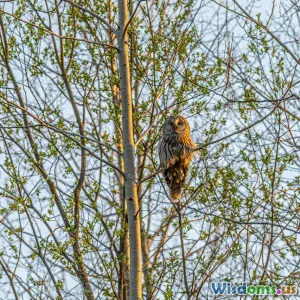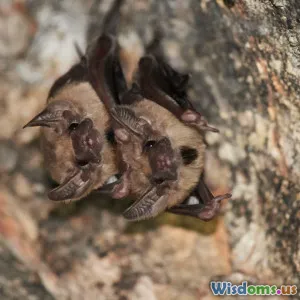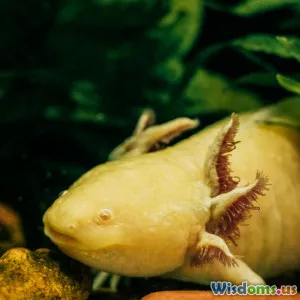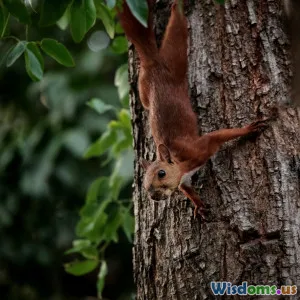
How Owl Anatomy Inspired Silent Aviation Technology
8 min read Explore how owl anatomy inspired breakthrough silent aviation technology, reducing aircraft noise with nature’s genius. (0 Reviews)
How Owl Anatomy Inspired Silent Aviation Technology
Introduction
Imagine airplanes that glide through the sky as quietly as a whisper, barely audible to those below. While silent flight in aviation might sound like a futuristic dream, it owes much to an extraordinary bird: the owl. Renowned for its ability to fly silently while hunting in the dead of night, the owl’s anatomy has inspired a wave of innovation in aviation noise reduction technologies. This article delves into how the evolutionary marvels of owl anatomy offer inspiration and blueprints for engineers aiming to reduce aircraft noise, improving environmental impact and enhancing urban air mobility.
The Challenge of Noise in Aviation
Aircraft noise is more than an inconvenience; it poses serious environmental and health challenges. According to the World Health Organization, noise pollution contributes to stress, sleep disruption, and cardiovascular diseases worldwide. Urban areas near airports bear the brunt of this issue.
To tackle aircraft noise, engineers have tried multiple strategies, including quieter engines, sound-absorbing materials, and operational changes like modified flight paths. However, achieving meaningful silent flight requires breakthrough innovations that often look beyond traditional aerospace engineering — into the realm of biomimicry.
Biomimicry: Learning from Nature’s Silent Flyers
Biomimicry is the practice of studying nature’s solutions to solve human challenges. Owls have served as a focal point in this field.
Why Owls?
Owls are predators that rely on stealth. Their furtive flight allows them to sneak upon prey undetected in the dark, which their survival depends upon. Scientists have identified three key features of owl wings and feathers that contribute to their silent flight:
- Leading Edge Serrations: The comb-like structures along their wing’s leading edges break up airflow, reducing noise.
- Velvet-like Down Feathers: Soft, velvety feathers cover their wings, further dampening air turbulence.
- Trailing Edge Fringe: Similar to splinters, these fringes reduce sound from wingtip vortices during flight.
Scientific Findings on Owl Quietness
Research by Norberg (1976) laid the foundation by quantifying how these features reduce noise. More recent experiments, such as those by Clark, Stengel, and Burns (2010), using wind tunnels and high-speed cameras, have visualized airflow patterns creating minimal turbulence.
Collectively, these features reduce the typical flapping noise of birds by a remarkable margin — estimates show owl flight noise is reduced by up to 10 decibels compared to similar-sized birds.
Translating Owl Anatomy to Aviation
Leading Edge Serrations and Wing Design
Engineers have integrated synthetic serrations inspired by owl wings onto turbine blades and wing leading edges to break up vortices, thereby minimizing noise.
Example: The National Renewable Energy Laboratory developed serrated blade designs for wind turbines to reduce noise and improve efficiency. These concepts have proved transferrable to small aircraft propellers, reducing noise footprint significantly.
Surface Texturing with Velvet-like Materials
Surface coatings mimicking the soft feather texture help dampen turbulence noise. Aviation materials scientists are experimenting with micro-structured coatings that emulate owl feather softness while retaining aerodynamic efficiency.
Real-world Application: NASA has tested ultra-soft coverings on drone wings to reduce high-frequency noise.
Trailing Edge Fringes on Aircraft Wings
Model tests on airfoils with trailing edge fringes confirmed noise reduction at stall conditions by smoothing airflow.
Technical firms have started integrating these fringed components on rotor blades of helicopters to curtail the persistent noise challenges associated with helicopter airframes.
Advantages and Impact on Aviation
Noise Reduction and Environmental Benefits
Implementing owl-inspired technologies in aviation could reduce noise by an estimated 3-6 decibels— which is significant given the logarithmic nature of sound. This translates into less noise annoyance and better compliance with stricter urban sound regulations around airports.
Fuel Efficiency and Aerodynamic Gains
Reduced turbulence and smoother airflow can improve overall aerodynamic performance. For example, the quiet leading edge serration can also reduce drag, contributing to lower fuel consumption and greenhouse gas emissions.
Future Air Mobility
As urban air mobility (UAM) platforms such as air taxis emerge, silent flight will be critical for public acceptance. Owl-inspired technologies offer a natural foundation for making these vehicles community-friendly.
Challenges and Future Research Directions
While promising, biomimetic adaptations are not plug-and-play solutions. Challenges include:
- Material Durability: Synthetic coatings must withstand harsh aviation environments.
- Scalability: Features effective on small bird wings must be scaled to large aircraft wings without compromising structural integrity.
- Cost Efficiency: Manufacturers must balance innovation costs with commercial viability.
Continuous interdisciplinary collaboration between biologists, material scientists, and aerospace engineers is key.
Conclusion
The silent flight of owls is a compelling example of nature’s ingenuity. By unraveling the anatomical secrets that allow these birds to fly stealthily, aviation technology is moving toward quieter, greener skies. From serrated wing edges to velvety surface textures, owl-inspired innovation is transforming noise reduction strategies across aviation platforms. As these biomimetic technologies mature, they promise not only to improve our flying experience but also to mitigate adverse environmental impacts, ushering in a new era of silent aviation.
References:
- Norberg, U.M., 1976. "Aerodynamics, Kinematics, and Energetics of Horizontal and Tilted Wings at Low Reynold Numbers." Journal of Experimental Biology.
- Clark, C., Stengel, R.F., & Burns, J., 2010. "Flow Visualization of Owl Wings in Flight." Bioinspiration & Biomimetics.
- National Renewable Energy Laboratory, "Serrated Blade Design for Noise Reduction," 2021.
- NASA Langley Research Center, "Surface Textures for Noise Reduction on UAVs," 2019.
This deep dive uncovers how learning from owls could lead to quieter skies and a healthier environment, sparking innovation at the intersection of nature and technology.
Rate the Post
User Reviews
Popular Posts




















